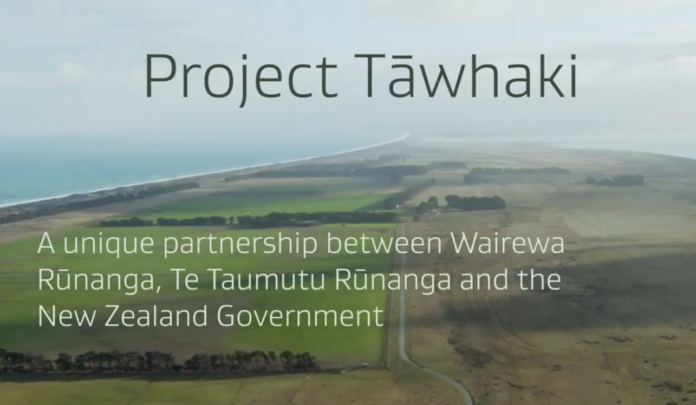An aerospace project has been announced for Kaitōrete Spit – a 25km stretch of land on the Canterbury coast.
The project is a commercial joint venture between Kaitōrete Limited (Te Taumutu Rūnanga and Wairewa Rūnanga) and the Crown, which Research, Science and Innovation Minister, Megan Woods says will unlock jobs, develop a space launch and R&D facilities, protect cultural interests and the unique bio-diversity of the area.
“Project Tāwhaki is a special partnership with both Rūnanga that will rejuvenate a nationally unique environment, honour deep cultural relationships, and provide amazing opportunities to tap into the multi-billion dollar aerospace economy. This is a very exciting day,” Minister Woods said.
“Suitable sites for a space launch and aerospace testing facilities are scarce globally and this long finger of land along the coast of Canterbury is an ideal location. I’m delighted that we can come together in partnership with Kaitōrete Limited to achieve collective conservation, cultural and economic wins.”
Kaitōrete Limited and the Crown have entered into a Joint Venture partnership to purchase critical parcels of land (1,000 hectares) near Banks Peninsula. The Crown has contributed $16 million to secure the land. The Crown and the Rūnanga will each own 50% shares in the land and project.
“This area is steeped in whakapapa and is hugely significant to the whānau of Te Taumutu and Wairewa. As mana whenua, it’s our role to make sure that we honour the past; those who have lived, travelled and fallen in this area by protecting and restoring its values and reaffirming our relationship to this whenua for our future generations,” Kaitōrete Limited spokesperson, David Perenara-O’Connell said.
“By developing aerospace on Kaitōrete Spit we can generate a sustainable and viable industry for us and our greater Christchurch community. This will also enable the Rūnanga to invest more into the rejuvenation of Kaitōrete and the adjoining hāpua, Te Waihora.
“This is a true partnership, co-designed and co-developed between the Rūnanga and the Crown. It recognises that the project could not have been possible without each other, and by working together, everyone is able to achieve their goals. The opportunities of Project Tāwhaki will benefit generations to come – mō tātou, ā, mō kā uri a muri ake nei (for us and our children after us).”
Kaitōrete Spit is internationally recognised for its high ecological values. The dry, windswept landscape contains threatened plants, animals and ecosystems that are rare or unique in the wild in Aotearoa.
“We will work in partnership with the Rūnanga to develop a conservation plan that will protect and rejuvenate the special ecological and cultural areas on and around the site while allowing for R&D activity,” Ms Woods said.
“Te Taumutu and Wairewa Rūnanga are mana whenua and rangatira of Kaitōrete. No one has more responsibility to manage, protect and restore the area for future generations, than them. This makes the Rūnanga the ideal partners for the Crown to work with and I’m excited for the future that Project Tāwhaki will bring.”
The name Project Tāwhaki, chosen by the partners, draws on the Ngāi Tahu ancestral connection to Tāwhaki, a demi-god from Ngāi Tahu pūrākau (stories) who sought celestial knowledge from his gods. Tāwhaki was able to navigate his journey by seeking and building strong relationships, by being adaptive and innovative and using his sheer tenacity to keep going until he reached his goal.
More information can be found on the MBIE website mbie.govt.nz/tawhaki



